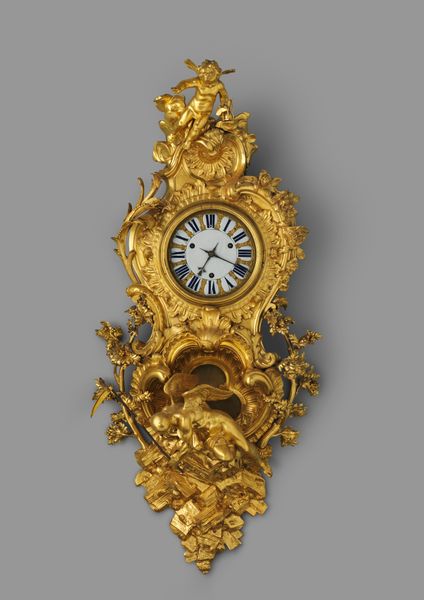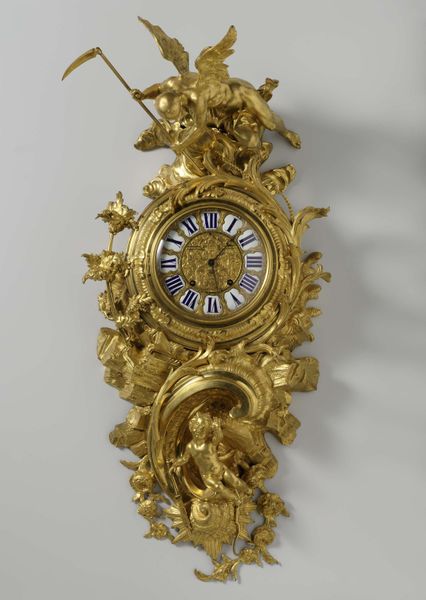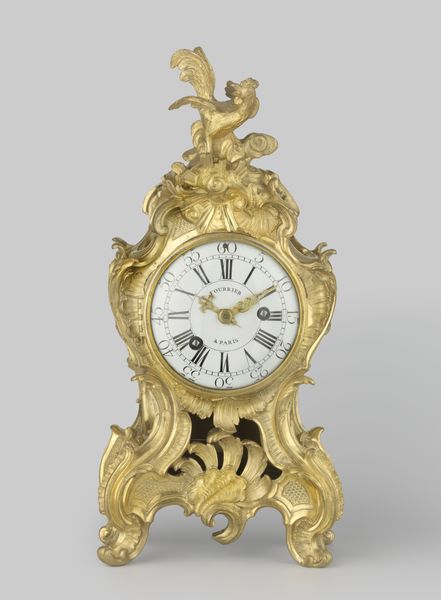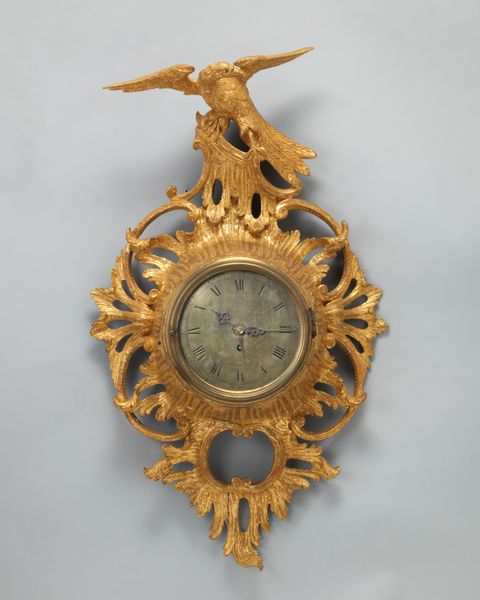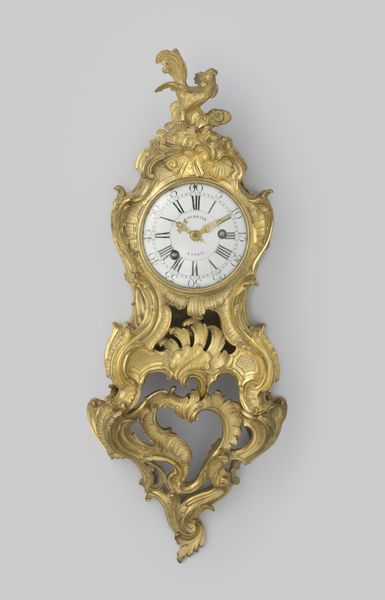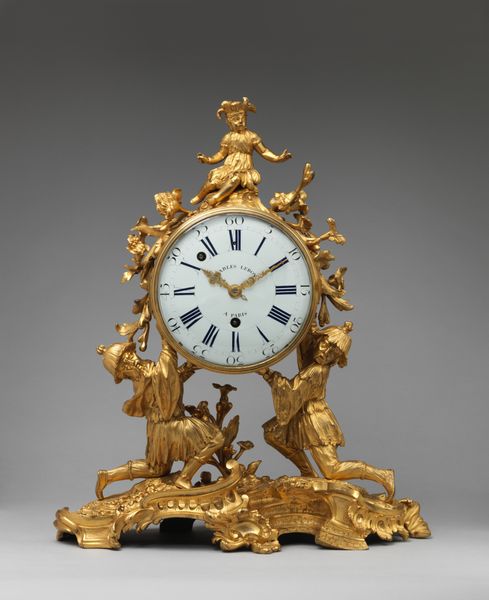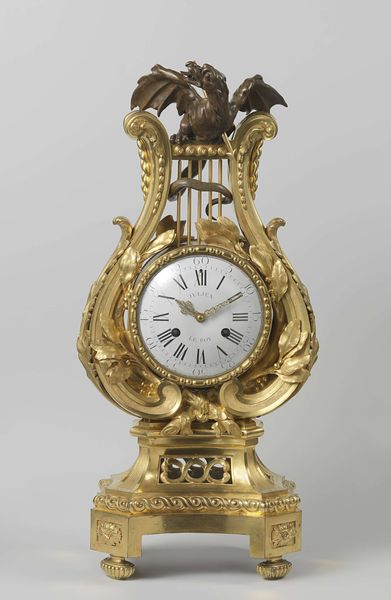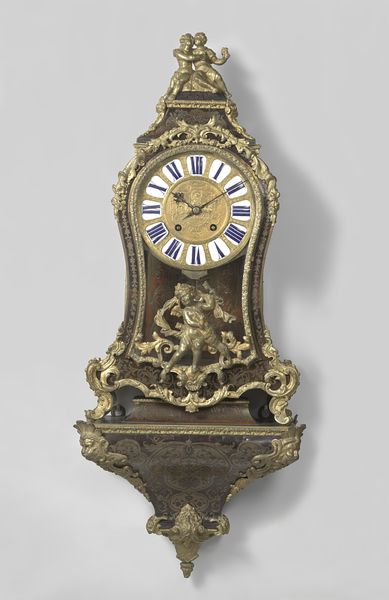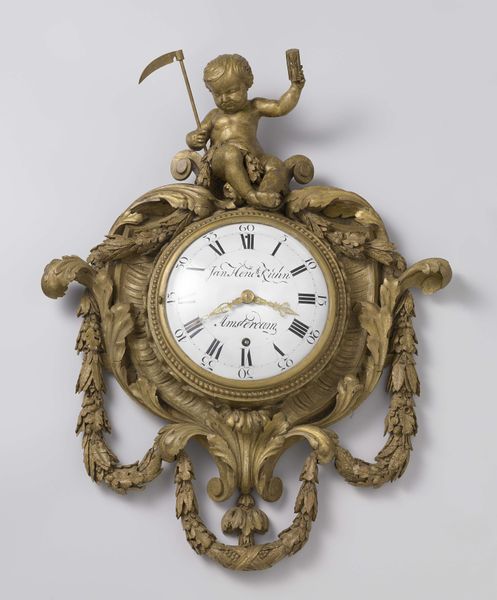
Wall clock (cartel) with movement of later date 1745 - 1756
0:00
0:00
guilding, sculpture, wood
#
guilding
#
sculpture
#
wood
#
decorative-art
#
rococo
Dimensions: wt. estimated: 45 1/2 × 21 1/2 × 6 1/2 in., 100 lb. (115.6 × 54.6 × 16.5 cm, 45.4 kg)
Copyright: Public Domain
This gilded wall clock, known as a cartel, was created by Jacques Caffieri in the eighteenth century. Its intricate design speaks to the opulence and power of the French court. During this period, timepieces were more than functional objects; they were symbols of status and scientific advancement. Notice the figure of the woman near the top of the clock. Does she represent a muse, or an allegorical figure of knowledge? The clock’s design incorporates both mythological and naturalistic elements, reflecting the era’s fascination with both classical ideals and scientific inquiry. The golden sunburst atop the clock evokes the French king Louis XIV, the Sun King. Caffieri, as a sculptor and designer to the French court, contributed to shaping the visual language of authority. The clock's ornate details and precious materials would have been exclusive to the wealthiest members of society. Caffieri's clock encapsulates the era's complex relationship between art, power, and the control of time itself.
Comments
No comments
Be the first to comment and join the conversation on the ultimate creative platform.

